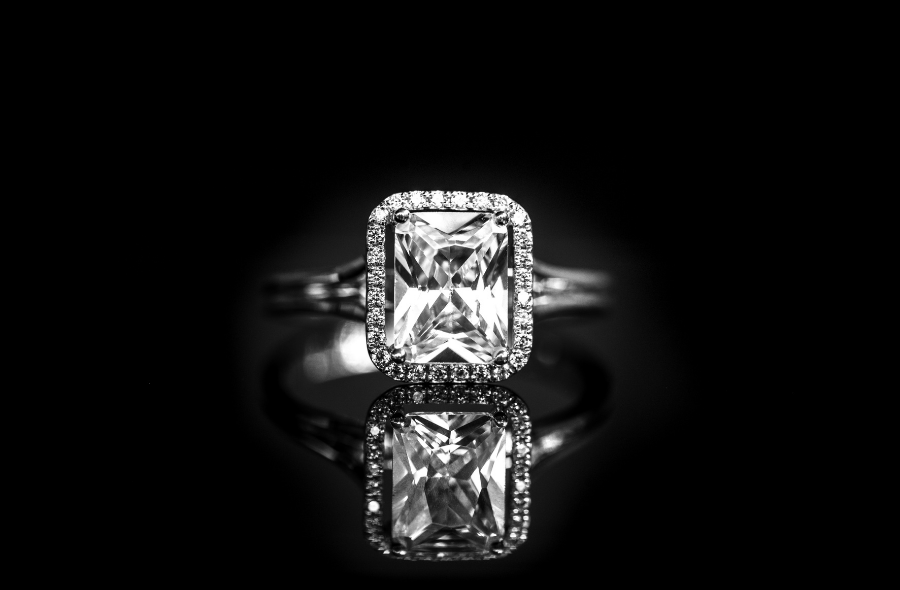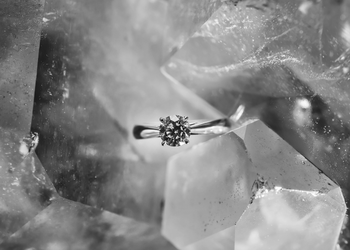
Diamonds created through technology still generate many questions and mistrust between professionals and the end customer, mainly due to the lack of information. To clarify many of these doubts, this article deals with diamonds created in laboratories and the most common technologies.
This type of gems began to be developed for industrial purposes in the 1950s. The diamond has key applications in different sectors. It is used intensively in optics, abrasives and hardware, due to its characteristics of resistance to being scratched, ability to transmit heat or optical properties.
As knowledge and technology evolved, gem quality diamonds began to be created.
Created diamonds are real diamonds, not imitations. They should not be confused with zircons, moissanites or other gems that claim to be imitations.
What is the difference between a created diamond and mined diamonds?
A lab created diamond is a real diamond; It has the same chemical, physical, crystallographic and optical properties and you can also find the same qualities on the market as a diamond of mining or natural origin. The main difference lies in its origin, being created by nature 150-200 kilometers deep and billions of years ago.
In the case of created diamonds, the creation process is infinitely faster : in a few weeks, you can have a diamond created in the laboratory.
Diamond production and creation methods
Today there are various technologies to grow diamonds; HPHT, CVD , explosive detonation and finally ultrasonic cavitation , but in this article we will focus on the first two technologies that are used to create HPHT and CVD gem diamonds:
- HPHT Technology - High Pressure, High Temperature
This technology was developed in the mid-1950s and has since been evolved by several research laboratories specializing in diamond synthesis around the world. The highest quality lab-made diamonds are grown using variants of this method. The most successful involves growing the diamonds in a 'flow' of molten metal alloy. The HPHT method recreates real geological conditions that occur 150 km deep in the Earth's mantle. The conditions are a unique and powerful combination of extreme pressure (up to 60,000 atmospheres) and very high temperature (up to 2,500°C), which are the natural conditions for diamond formation.
HPHT technology is the most used for creating small and medium-sized type II diamonds.
- CVD-Chemical Vapor Deposition Technology
Since the early 1980s, chemical vapor deposition has been a method by which diamond can be grown from a mixture of gaseous hydrocarbons. The advantages of diamond growth through CVD technology are based on an ability to create larger diamonds, better control of the resulting chemical impurities and therefore the quality and properties of the gem.
Unlike HPHT, the CVD process does not require high pressures, as growth generally occurs at pressures below 27 kPa. The growth of CVD involves the preparation of a base, a substrate, of graphite or diamond powder that is fed by varying amounts of gases. The gases always include a carbon source, typically methane, and are ionized using microwave energy, a hot filament, an arc discharge, a welding torch, a laser, an electron beam, or other means.
CVD technology is the most used for creating medium and large type IIA diamonds.
So how do diamonds differ now?
Given the different options available on the market, now it's time to ask this question: How do we distinguish the three types of diamonds? (natural, HPHT, CVD). If we have the opportunity to observe a rough diamond (without cutting and polishing), with the naked eye we can easily distinguish the diamonds. HPHTs have a cubic octahedron shape, while CVDs have a planar shape with a polyhedral exterior, and natural ones also have their characteristic octahedral shape. The problem lies in how to distinguish them when they have been carved and polished. At first glance it is impossible to know which is a created diamond and which has been extracted from nature.
Before moving on to the analysis methods we have, we are first going to review how many types of diamonds there are and what their composition is: Diamonds are made up of carbon atoms, but impurities enter their formation. Based on these impurities they are divided between type I and type II. In type II we will always have the presence of nitrogen while in type II, there is either no nitrogen, or it is found in negligible quantities.
Within group I, we can find nitrogen atoms in groups (usually two by two), or isolated. In the first case it will be type Ia and in the second it will be type IIa.
In the case of group II diamonds, a diamond without any impurities will be type IIa, which is considered to have exceptional color. If the crystal structure contains a boron atom, then the diamond will be IIb. This boron is what will give the diamond its characteristic bluish color.
In nature, diamonds formed underground are type Ia. The other three types are much rarer to find in nature (less than 2%). If we go to the laboratory, production is just the opposite. It is practically impossible to create a type Ia diamond artificially. The type Ib diamond can be produced in the laboratory using HPHT and will give us orange-colored stones. The other two types IIa and IIb can be produced with both techniques.
At first glance it is impossible to tell which is a created diamond and which has been extracted from nature.
However, the devices available on the market only work for colorless, or almost colorless, diamonds. Therefore, screening will allow us to separate Ia diamonds from IIa diamonds, because they are colorless diamonds. Type Ib and IIb are colored (fancy) diamonds, so these devices are useless because colorless diamonds may also have undergone a color treatment, so they need to be analyzed in more depth.
With gemological tools and expert knowledge, in gemological laboratories we can see characteristics that tell us what type of created diamond we have. In the HPHT technique, for example, we can find metallic inclusions and a greenish fluorescence can also appear under ultraviolet light. Characteristic inclusions in the form of dots may appear in CVD diamonds.
There are other non-invasive techniques such as spectroscopy, and they can also be analyzed through crystal growth. The growth structure of a natural diamond is very irregular , as it takes a long time until it is completely formed.
In the case of synthetic diamonds, the growth is completely controlled and their structure will follow a much more regular pattern. In HPTP diamonds we will see a cross-shaped structure, while in CVD we will see the layers that have been created to form the stone.
However, it is also true that in reality observing growth patterns is quite complicated, so the experience of a qualified gemological professional will always be needed to achieve accurate detection.
How to make the right decision when purchasing a diamond.
Consumers have more options than ever and are the great beneficiaries of this unprecedented offer. If we assume that any of the options we are referring to are real and practically exact diamonds, the decision should be based on our beliefs as consumers and the value we perceive in exchange for our money.
Mined diamonds provide their owners with a natural product that has taken millions of years to create, so exclusivity must be the main motivation behind such a decision. On the other hand, created diamonds mean an extra revision in the work practices involved in their creation, a higher respect for the environment and finally a much lower price.
Content curated and supervised by:
Sergio E. Murcia , Co-Founder of Mimoke and CEO



